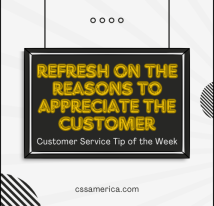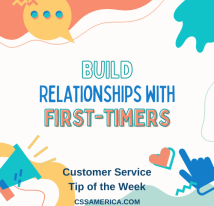You are One in a Million!
That can mean a lot of different things to a lot of different people. Depending on the tone in which it’s said, the phrase can be a compliment or a criticism. If there are 8 billion people in the world, that means there might be 8,000 of you on this earth.
But regardless of how it’s intended, there is one core meaning: You are unique.
We often talk about customers needing to be viewed as individuals, not as a number. They need to be considered for what makes them and their situation unique. But what makes an individual or the situation unique?
If Service Excellence requires that we treat each person as an important and valued individual, let’s talk about what makes that individual in front of you or on the phone with you, that person you’re e-mailing or texting…unique:
- How long have they worked with your business?
- How urgent is their need?
- What is their emotional state?
- What is their knowledge or experience level in working with your organization or in dealing with situations like this?
- What is their demographic makeup?
- Where are they from, and where are they going next?
If they’re coming to you about a prior experience:
- When did their prior experience or issue occur?
- Who was involved in that prior experience or issue?
- What caused that prior experience or issue?
- What is their ultimate goal moving forward?
Maybe the individual responses to these questions are not unique, but the sum of all these responses are usually quite unique. Think of it this way – if you flip a coin, there are only two options, heads and tails. What’s so unique about that? But if you flip that coin 20 times, how many different combinations of heads and tails could you have? What do you know, it’s about a million!
To treat someone like one in a million, work to uncover what’s unique.
Signup for FREE Tips! Contact Us More Resources for You Visit Our Home Page
























